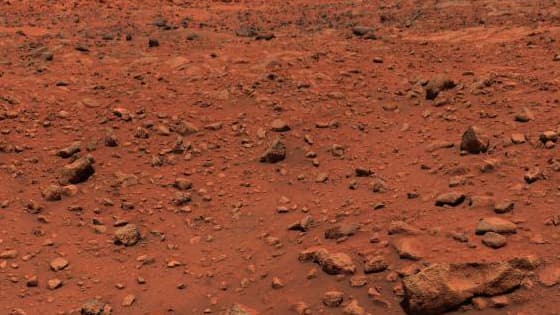
Pictures of an ancient glacier give hope for shallow waters
Scientists hypothesize that, below the marked area, the glacier may have been partially preserved, and thus the ice is present at shallower depths.
American researchers announced Wednesday in a study After observing the “remains of a recent glacier” on Mars. It was noted as a key finding of human exploration, as it “raises the possibility that ice is still present at shallower depths in the area”.
Recently, scientists believe that there is a glacier in the region of the planet called “Noctis Labyrinthus”, near the equator, because they discovered clear deposits there from space that show “many characteristics of the glacier”, Explains a press release from the researchers.
Is ice still below the surface?
“What we found was not ice, but salt deposits with the detailed morphological characteristics of a glacier,” said planetary scientist Pascal Lee, lead author of the study, who works for SETI (Search for Extra-Terrestrial Intelligence) and the Mars Institute.
This ancient glacier is about 6 km long and up to 4 km wide according to the authors’ measurements, “with a surface elevation of +1.3 to +1.7 km”.
The theory put forward by the researchers is that in this region of Mars, which has a history of volcanic activity, volcanic materials came into contact with ice, which formed a “solid layer of sulfate salts.” The big unknown now is whether the ice has been preserved beneath this crust, or whether it has disappeared altogether.
“It is possible that all of the water ice in the glacier has now sublimated (it has gone from an ice state to a gas state, as the editor noted). But there is also a possibility that some part remains protected at a low depth under sulfate salts,” says Pascal Lee.
Is it possible to “extract water ice from the Earth”?
The main advance of this discovery is the possibility of a new water reserve on the planet, as human explorations are envisioned in the coming decades.
But it also changes the view of this planet. Until then, the question was, in the event of a human crew being sent to Mars, to land them “in a place where they can extract water ice from the Earth,” or rather, at the highest latitudes of the Red Planet. “Mars’ water ice is trapped underground” in the “near-polar regions,” So explains NASA.
“But these latter environments are generally cooler and harder for humans and robots,” Pascal Lee explains.
On Mars, “if there are tropical places where ice can be found at shallow depths, then we’ll have the best of both environments: warmer conditions for human exploration but still access to ice,” he notes.
This discovery still needs to be clarified of course, it is already necessary to establish whether there is indeed ice under the marked area, and if so, in what quantities.
The most important items

“Incurable web evangelist. Hipster-friendly gamer. Award-winning entrepreneur. Falls down a lot.”
